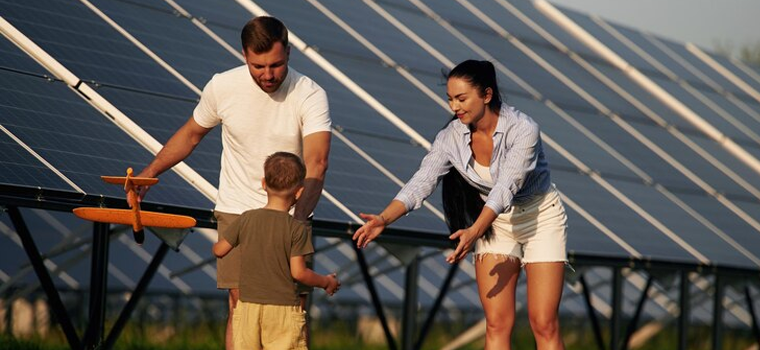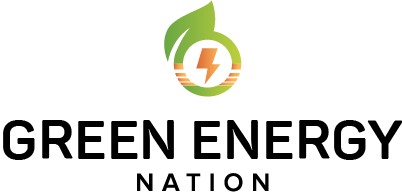
Solar panels have revolutionized the strategy of generating electricity. They can provide clean, renewable energy to homes, businesses, and industries. Solar panels represent a long-term investment with significant financial and environmental benefits. Yet, for any prospective buyer, the question remains: How long do solar panels last?
Basics: How Long Does a Solar Panel Last?
Normal ones are pointed to last around 25 to 30 years, but at this stage, they do not finally end operating; they gradually start performing in a declining trend, still producing but at a lower power intensity.
Solar Panel Longevity in Detail
- Initial Efficiency: Most installed solar panels perform at maximum capacity or 100% efficiency under standard conditions.
- Degradation Rate: The average efficiency degradation of the panel is 0.5% while higher quality panels often degrade more slowly.
- Performance After 25 Years: Most solar panels stand at 80-85% efficiency even after 25 years.
- Extended Lifespan: Some panels have achieved up to 40+ years of lifespan, but lowered performance levels.
Factors Affecting The Shelf Life Of Photovoltaic Panels:
Solar panels are an investment meant to last for decades, but their actual lifetimes vary remarkably due to several very important factors. Even though technological improvement enhances their durability and efficiency, understanding these factors will maximize their lifespans. Let's discuss the different factors affecting solar panel lifetimes.
1. Panel Quality: The Foundation of Endurance
The quality of the solar panels you choose remains possibly the most important factor in determining how long they will last. Better-quality panels, made using advanced techniques and durable materials, degrade much more slowly and are much more resistant to environmental stresses than lower-grade ones. Manufacturers providing extended warranties (20-25 years or more) generally manufacture panels with durability and performance in mind. Some of the high-quality panels include:
- Superior Silicon Cells: Convert sunlight into electricity more efficiently and are less prone to wear over time.
- Enhanced Lamination: Quality lamination prevents moisture intrusion and material separation, thereby extending panel life.
- Advanced Coatings: Anti-reflection and protective coatings protect panels from damage by UV radiation and harmful weather conditions.
Choosing a reputable manufacturer with stringent testing standards guarantees that the panels will provide reliable performance for many years to come.
| Panel Type | Degradation Rate | Reduction over 25 years | Amount of original output after 25 years |
|---|---|---|---|
| Tier 1 | 0.30% | 6.96% | 93.04% |
| Tier 2 | 0.50% | 11.33% | 88.67% |
| Tier 1 | 0.80% | 17.53% | 82.47% |
2. Environmental Conditions: Nature's Factor in Longevity
The existence of elements continuously causes solar panels to deteriorate faster. However, a lot of environmental factors contribute greatly to the effect:
Uv Radiation
Although solar panels are crafted to capture sunlight, extended exposure to UV rays can slowly degrade their materials over time. Contemporary panels come equipped with UV-resistant coatings; however, the pace at which materials deteriorate depends on the specific location and the intensity of sunlight received.
Temperature Variation
Severe alternating temperatures will stress the material of the solar panels, causing it to break into microscopic cracks or warp. This effect, known as thermal cycling, can occur when large temperature swings exist from night to day in a specific area.
Meteorological Phenomena
- Hailstorms: High-quality panels are hail-resistant, but frequent storm attacks or more severe ones can cause physical damage.
- Heavy Snow: The weight of the snow itself might be pushing heavily upon mounting systems or perhaps cracking the panels.
- Hurricanes and Strong winds: In areas of high winds, debris may scratch or break panels. Installation with frames must be secure in such zones.
Airborne Particles
Certain regions have high pollution and dust levels, which affect panel efficiency over time by depositing particles on its surface. Cleaning and maintenance can easily reduce such occurrences.
3. Maintenance and Care: Extending Panel Life
Maintenance is very crucial in increasing the lifespan of the solar panels. Failure to do that may lead to productivity loss and premature failure. Here's how proper maintenance helps:
Cleaning
Dust, dirt, bird droppings, and leaves can obstruct sunlight, reducing the energy output. Cleaning panels every few months, especially after storms or in dusty climates, ensures maximum efficiency.
Inspections
Annual professional inspections uncover problems that an untrained eye may miss: loose wiring, corrosion, or tiny micro cracks. Such problems detected then do not add to the damage, and thus prolong the life of the system.
Addressing Minor Grievances
A slight crack or loose connection may seem like a minor matter but can snowball into major issues with time. Minor flaws brought to a fair prevalence keep the system in its optimal condition.
4. Installation Quality
Quality installation is key to the efficiency of solar power. Shoddily installed sun panels become susceptible to a wide range of problems, including:
- Water Damage: When sealing is not properly made, it can admit moisture into the system causing corrosion or electrical failures.
- Shading and Angle Problems: Panels should be installed at angles where there will be minimum shading to obtain maximum light absorption.
- Loose Connections: Bad wiring or lack of proper mounting of panels can cause energy loss and potential safety hazards.
Always hire certified professionals for installation, and the system can be customized to suit your location and energy requirements.
How Solar Panels Degrade Over Time
Although solar panels are very durable, they do age. Their ability to absorb sunlight varies over time and goes through three phases:
1. Early Age (1-10 Years)
The first ten years are considered the "golden years" in the lifetime of a photovoltaic module. In this period :
- Panels are performing at maximum, providing a constant energy output.
- The decay rates are still small, usually less than 0.5% per year.
- Most of the problems are covered by the manufacturer's warranty.
2. Median Period (10-25 years)
Panels start showing slight wear between ages 10 to 25 years. This period is characterized with
- Slightly lesser energy yield because of natural degradation.
- Increased susceptibility to environmental stress, though high-quality panels maintain reliability.
- Regular servicing is becoming more essential to maintain performance.
3. After 25 Years
After around 25 years, most panels remain operational but only at partial levels (normally 70-85% of their actual capacity).
- Panels may require replacement to maintain high energy yields.
- Some of them are optimized for lower energy ranges, such as to boost power in a remote location.
Advancements in Solar Technology Are Paving The Way For Extended Lifespans
Technological dynamics always upgrade their solar panels for durability and efficiency. The recent efforts include:
Bifacial panels
Bifacial panels can take advantage of light reflected from the backside, thereby producing more energy while also minimizing wear.
Smart Supervision Mechanisms
These systems identify inefficiencies and notify users of potential issues, facilitating prompt maintenance and repair.
Resistive Textiles
Modern panels contain corrosion-resistant frames and advanced glass technologies that can tolerate more severe settings.
What Happens When Solar Panels Reach Their Lifespan?
They hardly become completely unusable even after tens of decades in service. This is what can be done with aging panels:
Repurposing for Secondary Use
Older panels possess the ability to energize smaller systems, including garden lights or off-grid cabins.
Recycling to Reduce Waste
Recycling plants help recover valuable materials like silicon, aluminum, and glass.
Replace with New Technology
Replacing the outdated panels with high-tech systems allows for efficiency and guarantees further energy savings.
Suggestions to Prolong the Longevity of Solar Panels
Maximizing solar panel lifetime requires a combination of care, quality, and monitoring:
- Invest in premium panels. Look for products that have proven performance and rigid warranties.
- Keep surfaces clean by regularly removing obstructions such as dirt and debris.
- Conduct Routine Inspections: Spot and address minor issues before they escalate.
- Conduct Routine Inspections: Spot and address minor issues before they escalate.
Cost and Lifespan: Things You've Got to Know
Although solar panels require a significant upfront investment, their long lifespans and low maintenance costs make them a financially smart energy source in the long run. On average, these panels last around 25 to 30 years, but over the past decade, the cost of solar technology has significantly decreased, making it more feasible for homeowners. Additionally, solar panels often pay for themselves via energy savings within a timeframe of 7 to 12 years.
Payback Period
The payback period is the duration taken by the savings produced by your electricity bills to cover the initial cost of installing the solar panels. With a 25-30-year lifespan of PV panels, even a higher cost at the installation end will provide years and years of free energy when your payback period is complete.
Maintenance Expenses
Another major advantage of solar panels is that they require very low maintenance. Apart from some cleaning and routine check-ups, there is no large amount of continued expenditures on a solar system that happens to be astronomically cost-effective at such long periods. Learn more about cost calculations without using a Solar Calculator
Conclusion
To get the best possible solar investment, homeowners will be interested to know the lifespan and longevity of solar panels. Proper selection of high-quality panels and ensuring proper installation will go along with a comprehensive lengthening of the life of a solar system whose dedication to regular maintenance guarantees years of clean energy. While the lifespan of solar panels is determined by aspects of the environment and maintenance, contemporary panels are purposely made for 25-30 years or more. Many are still able to produce power after this period but with a reduced efficiency. Since solar technology is under constant development, one will predict that solar panels will only become tougher and more efficient with time.
Recent Post

Category
- Going Solar
- Battery Storage
- Solar Innovation
- Solar Incentives by state
- Solar Panel & Accssories
